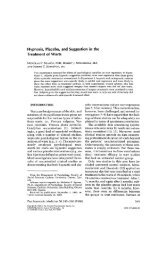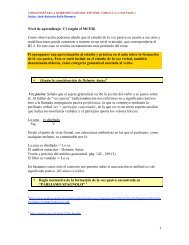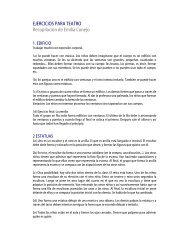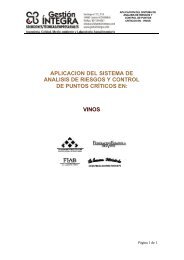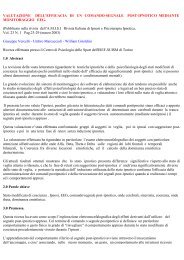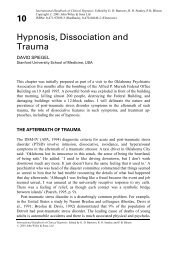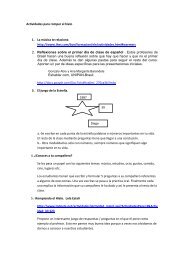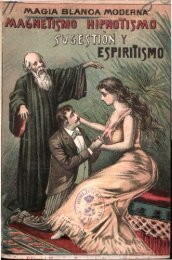Hypnosis and the Law: Examining the Stereotypes
Hypnosis and the Law: Examining the Stereotypes
Hypnosis and the Law: Examining the Stereotypes
Create successful ePaper yourself
Turn your PDF publications into a flip-book with our unique Google optimized e-Paper software.
1290 CRIMINAL JUSTICE AND BEHAVIOR<br />
not a magical way of contacting <strong>the</strong> unconscious <strong>and</strong> uncovering lost memories. Indeed, by<br />
endorsing <strong>and</strong> promoting <strong>the</strong> popular stereotypes of hypnosis, many hypnosis practitioners<br />
have effectively been hoisted with <strong>the</strong>ir own petard; that is, by describing hypnosis as a<br />
special trance or brain state, <strong>the</strong>y may have unwittingly laid <strong>the</strong>mselves open to accusations<br />
of abuse allegedly committed while <strong>the</strong>ir victims were unaware of what was happening to<br />
<strong>the</strong>m <strong>and</strong>/or unable to resist. Moreover, by emphasizing <strong>the</strong> unique properties of hypnosis<br />
to access hidden memories, <strong>the</strong>y may have encouraged <strong>the</strong> creation of pseudomemories <strong>and</strong><br />
<strong>the</strong>reby <strong>the</strong> demise of hypnosis as a memory facilitation technique.<br />
To counter misconceptions about hypnosis, <strong>the</strong> obvious message is that experts in <strong>the</strong><br />
area of hypnosis should be more sensitive to problems of misinterpretation. For example,<br />
instead of describing hypnosis with references to traditional concepts such as <strong>the</strong> hypnotic<br />
trance or altered state of awareness, academic researchers, clinicians, <strong>and</strong> o<strong>the</strong>r practitioners<br />
perhaps should adopt an approach that uses concepts <strong>and</strong> terminology that relate hypnotic<br />
phenomena more to everyday behavior <strong>and</strong> experience—such as attention, concentration,<br />
<strong>and</strong> imagination. Such an approach might also encourage experts to be more open-minded<br />
about hypnosis. For example, <strong>the</strong> evidence clearly suggests that memory enhancement<br />
procedures explicitly labeled as hypnosis should be used with caution, <strong>and</strong> it makes sense<br />
to recommend that <strong>the</strong> police use <strong>the</strong> cognitive interview <strong>and</strong> o<strong>the</strong>r procedures such as<br />
meditation, context reinstatement, <strong>and</strong> eye closure instead. But it does not follow that investigative<br />
hypnosis is so dangerous that it should be banned outright as an investigative technique<br />
<strong>and</strong> that anyone who has previously been hypnotized should be banned from<br />
testifying, as a matter of routine. Indeed, <strong>the</strong> procedures adopted in hypnotic investigative<br />
interviewing may yet provide a rich source of ideas <strong>and</strong> techniques that may benefit forensic<br />
interviewing in <strong>the</strong> future.<br />
REFERENCES<br />
American Medical Association. (1986). Council report: Scientific status of refreshing recollection by <strong>the</strong> use of hypnosis.<br />
International Journal of Clinical <strong>and</strong> Experimental <strong>Hypnosis</strong>, 34, 1-12.<br />
American Psychological Association, Division of Psychological <strong>Hypnosis</strong>. (1994). Definition <strong>and</strong> description of hypnosis.<br />
Contemporary <strong>Hypnosis</strong>, 11, 143.<br />
Anderton, C. H. (1986). The forensic use of hypnosis. In F. A. De Piano & H. C. Salzberg (Eds.), Clinical applications of<br />
hypnosis (pp. 197-223). Norwood, NJ: Ablex.<br />
Barber, T. X. (1961). Antisocial <strong>and</strong> criminal acts induced by “hypnosis”: A review of clinical <strong>and</strong> experimental findings.<br />
Archives of General Psychiatry, 5, 301-312.<br />
Barber, T. X. (1969). <strong>Hypnosis</strong>: A scientific approach. New York: Van Nostr<strong>and</strong>.<br />
Barber, T. X., Spanos, N. P., & Chaves, J. F. (1974). Hypnotism, imagination, <strong>and</strong> human potentialities. New York: Pergamon.<br />
Barnier, A. J., & McConkey, K. M. (1995). Reports of real <strong>and</strong> false memories: The relevance of hypnosis, hypnotizability,<br />
<strong>and</strong> <strong>the</strong> context of memory test. Journal of Abnormal Psychology, 101, 521-527.<br />
Benson, H., & Klipper, M. Z. (1976). The relaxation response. London: Collins.<br />
Bowers, K. S. (1983). <strong>Hypnosis</strong> for <strong>the</strong> seriously curious. New York: Norton.<br />
British Psychological Society. (2001). The nature of hypnosis. Leicester, UK: Author.<br />
Coe, W. C., Kobayashi, K., & Howard, M. L. (1972). An approach toward isolating factors that influence antisocial conduct<br />
in hypnosis. International Journal of Clinical <strong>and</strong> Experimental <strong>Hypnosis</strong>, 20, 118-131.<br />
Coe, W. C., Kobayashi, K., & Howard, M. L. (1973). Experimental <strong>and</strong> ethical problems of evaluating <strong>the</strong> influence of<br />
hypnosis in antisocial conduct. Journal of Abnormal Psychology, 82, 476-482.<br />
Coe, W. C., & Sarbin, T. R. (1991). Role <strong>the</strong>ory: <strong>Hypnosis</strong> from a dramaturgical <strong>and</strong> narrational perspective. In S. J. Lynn &<br />
J. W. Rhue (Eds.), Theories of hypnosis: Current models <strong>and</strong> perspectives (pp. 303-323). New York: Guilford.<br />
Conn, J. H. (1972). Is hypnosis really dangerous? International Journal of Clinical <strong>and</strong> Experimental <strong>Hypnosis</strong>, 20, 61-79.<br />
Crawford, H. J. (1996). Cerebral brain dynamics of mental imagery: Evidence <strong>and</strong> issues for hypnosis. In R. G. Kunzendorf,<br />
N. P. Spanos, & B. J. Wallace (Eds.), <strong>Hypnosis</strong> <strong>and</strong> imagination (pp. 253-282). New York: Baywood.<br />
Downloaded from<br />
http://cjb.sagepub.com at SAGE Publications on October 31, 2008




